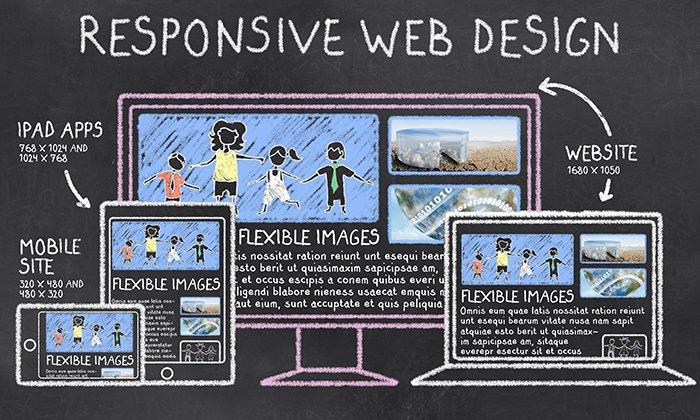Viva Resa: Your Gateway to Insightful Living
Discover news, trends, and tips for a vibrant lifestyle.
Responsive Web Design: Keeping Up With The Mobile Joneses
Discover essential tips for mastering responsive web design and stay ahead in the mobile game. Don't get left behind!
Understanding the Fundamentals of Responsive Web Design
Responsive Web Design is a critical approach to web development that aims to create websites that provide an optimal user experience across a wide range of devices, from desktop computers to mobile phones. This methodology involves the use of flexible grids, fluid images, and media queries to ensure that your website's layout adapts seamlessly to the screen size of the device being used. By adopting responsive design principles, you can enhance usability and accessibility, ultimately leading to improved engagement and reduced bounce rates for your site.
One of the key components of responsive web design is the concept of flexibility. A flexible grid layout allows your website's structure to proportionally adjust based on the width of the browser window. In addition, the use of media queries enables developers to apply different styles and layouts depending on device characteristics like screen width, resolution, and orientation. By understanding and implementing these fundamentals, web designers can create visually appealing and functional websites that cater to the needs of every user, ensuring that content is easily accessible, regardless of the device being used.

Top 10 Best Practices for Responsive Web Design in 2023
Responsive web design is essential in 2023, ensuring websites provide optimal viewing experiences across a range of devices. Top 10 best practices for responsive web design include flexible layouts, which adapt to different screen sizes by using relative units like percentages. Additionally, implementing media queries allows you to apply CSS styles based on the device's characteristics, such as width and orientation, making your site truly responsive.
Another best practice is to use responsive images that automatically adjust to fit the screen, enhancing load times and performance. Additionally, minimizing the use of fixed widths and adopting a mobile-first approach in your designs can lead to cleaner, more efficient code. Lastly, don't forget to test your designs across various devices and browsers to ensure a seamless user experience, solidifying your website's adaptability in 2023.
Why Is Responsive Web Design Essential for Your Online Business?
In today's digital landscape, responsive web design is essential for any online business striving for success. With the increasing use of various devices such as smartphones, tablets, and laptops to access the internet, having a website that adapts seamlessly to different screen sizes is crucial. A responsive design ensures that your site provides an optimal viewing experience, allowing users to navigate easily without excessive resizing or scrolling. This not only enhances user satisfaction but also improves your site's search engine optimization (SEO) ranking, as search engines prioritize mobile-friendly websites in their results.
Moreover, implementing a responsive web design can significantly reduce your overall maintenance costs. Instead of managing separate websites for desktop and mobile users, a single responsive site streamlines updates and changes across all platforms. This efficiency translates into a better allocation of resources, allowing you to focus on growing your business. Ultimately, embracing responsive design not only caters to the diverse needs of your audience but also positions your brand as modern and user-centric, enhancing your competitive edge in the online marketplace.